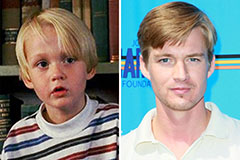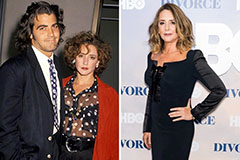Enhancing Your Lawful Technique With Expert Test Presentations
In today's lawful landscape, the significance of expert trial discussions can not be overemphasized. By transforming thick lawful ideas right into engaging narratives, practitioners can boost juror understanding and retention.
Significance of Trial Presentations
Trial discussions offer as a pivotal aspect in the lawful procedure, successfully connecting the space in between complex legal debates and juror understanding. The capability to boil down elaborate legal principles into obtainable stories is crucial for jurors, who have to make enlightened choices based on the proof presented. A well-crafted presentation not only clarifies the case yet also enhances the persuasiveness of the disagreement, eventually influencing the court's perception.
In a period where interest spans are limited, the value of engaging visuals and clear communication can not be overemphasized. Trial presentations offer to catch jurors' rate of interest and maintain their focus, enabling a deeper understanding of the realities and lawful concerns available. They supply a structured framework that organizes the case, helping with sensible flow and coherence.

Trick Parts of Effective Presentations
A reliable discussion in a court room establishing rest on numerous vital parts that collectively boost its impact. Primary amongst these is quality of message. Lawyers have to distill intricate lawful arguments into concise, conveniently absorbable factors to guarantee jurors understand the core concerns. Complementing this clearness is using an engaging narrative structure. A well-organized discussion, with a clear beginning, middle, and end, guides the target market through the situation, making it a lot more relatable and unforgettable.
Visual help play a vital role also, as they can significantly strengthen essential messages. Efficient usage of displays, graphes, and representations can make clear complex details and highlight necessary truths. In addition, the presenter's distribution style is important; confident, interesting interaction fosters integrity and maintains jurors' focus.
Lastly, comprehending the audience is vital. Customizing the discussion to the jurors' backgrounds and worths can promote a link that improves receptivity to the debate. In summary, quality, narrative framework, aesthetic aids, distribution style, and audience recognition are essential to crafting an efficient courtroom discussion that resonates with jurors and supports the overarching lawful method.
Innovation in Test Presentations
Modern courts progressively incorporate modern technology to improve trial discussions, developing on the fundamental elements of reliable interaction established via clear messaging and engaging stories. The consolidation of audio-visual aids, such as high-def projectors and interactive display screens, enables legal groups to existing evidence in a much more engaging way. This innovation not only records the court's interest yet likewise promotes a better understanding of complex information.

Digital devices, including presentation software program and digital exhibition administration systems, streamline the company and retrieval of evidence (trial presentations). Attorneys can quickly reference records, photos, and video clips, ensuring here that vital details is conveniently available during the trial. Furthermore, the usage of animations and simulations can strongly highlight vital concepts, making them simpler for jurors to grasp
In addition, court innovation promotes collaboration amongst attorneys, enabling real-time changes to discussions based on jury responses or unforeseen developments. The ability to adapt on the fly is crucial in keeping engagement and enhancing disagreements. As technology remains to advance, its role in test presentations will undoubtedly broaden, using cutting-edge methods to connect effectively and persuasively in the pursuit of justice.
Storytelling Techniques for Influence
Reliable narration techniques are crucial in delivering impactful test discussions, as they change intricate lawful arguments right into relatable stories. A well-crafted tale captivates the audience, making it less complicated for jurors to recognize and keep in mind crucial factors.
To create a compelling story, lawyers should concentrate on establishing a clear structure with a start, middle, and end. The browse around this site beginning ought to introduce the case context and its importance, while the middle elaborates on the my latest blog post core issues, weaving in evidence and witness statements that sustain the argument. Conclusively, the finishing ought to strengthen the desired message, driving home the desired result.
Additionally, including emotional elements can considerably boost the narrative's influence. By humanizing the case, lawyers can evoke empathy, enabling jurors to attach directly with the realities presented. Using vivid imagery and anecdotes can additionally help in illustrating intricate themes, making them more substantial and memorable.

Tips for Application in Court
Applying narration techniques in court calls for cautious preparation and execution to guarantee that the story reverberates with jurors. Begin by recognizing the core message of your case and straightening it with the emotional and factual elements that will engage the court. Develop a clear and engaging narrative arc that includes an introduction, a development of dispute, and a resolution.
Use visual help to boost storytelling; exhibitions, timelines, and multimedia presentations can aid show complex concepts and maintain juror rate of interest. Practice your distribution, making sure that body language, tone, and pacing are constant with the emotional weight of your tale.

Verdict
To conclude, specialist trial discussions play an important duty in boosting legal techniques by effectively connecting complicated disagreements to jurors. The combination of aesthetic aids, clear stories, and psychological narration cultivates juror engagement and understanding. By leveraging innovation and adhering to vital components of effective presentations, lawyers can substantially boost the likelihood of attaining beneficial verdicts. The application of these strategies is essential for modern trial advocacy, inevitably shaping the end result of legal process - trial presentations.
 Taran Noah Smith Then & Now!
Taran Noah Smith Then & Now! Mason Gamble Then & Now!
Mason Gamble Then & Now! Talia Balsam Then & Now!
Talia Balsam Then & Now! Barbi Benton Then & Now!
Barbi Benton Then & Now! Shannon Elizabeth Then & Now!
Shannon Elizabeth Then & Now!